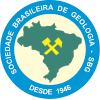

FT-2 - Tectonomagmatic evolution of the Archaean basement of the Quadrilátero Ferrífero province (Minas Gerais, Brazil): the tonalite-trondhjemite-granodiorite (TTG) to calc-alkaline granodiorite-granite transition
Pre-symposium field trip 4 days September 15th - 19th
Field trip leaders
-
Federico Farina (Universidade Federal de Ouro Preto)
-
Cristiano de Lana (Universidade Federal de Ouro Preto)
Number of participants: 20 to 24
Departure / Arrival
The field trip will start and end in Belo Horizonte, at Tancredo Neves International Airport (Confins), MG, Brazil.
Introduction
The São Francisco Craton, eastern portion of the Precambrian core of South America, comprises several Archaean to Palaeoproterozoic blocks bounded by major 2.1-2.0 Ga old suture zones. The southernmost part of the craton, known as the Southern São Francisco Craton, contains one of the most important mining districts in South America - the Quadrilátero Ferrífero, whose Banded Iron Formation ore resources have been exploited since the Portuguese colonial period. The mining disctrict also hosts the Morro Velho orogenic gold deposit, discovered at the end of the 17th century. The Archaean Southern São Francisco Craton is a typical dome-and-keel province characterized by km-scale amphibolite-facies gneiss-granitic domes surrounded by elongate keels of polydeformed, low-grade folded supracrustal rocks. The tectonomagmatic evolution of the three largest domes in the craton (namely the Bação, Bonfim and Belo Horizonte domes) occurred between 3200 and 2700 Ma. These domes expose several phases of TTG gneisses and plutons intruded by leucogranite sheets, pegmatitic dykes and bodies of calc-alkaline (“potassic”) granodiorite and granite. Three main periods of TTG-like magmatism have been recognized and are described as the Santa Bárbara (ca. 3200 Ma), Rio das Velhas I (ca. 2930-2870 Ma) and Rio das Velhas II (ca. 2870) events. The latest TTG event coincides with felsic volcanism and deposition of turbiditic wackes of the main greenstone belt sequence. Shortly after the last period of TTG emplacement, calc-alkaline granitoids were emplaced during a 50 Ma interval (2750-2700 Ma), marking the final stabilization of the craton.
Provisional Program
Day 1 / Day 2 - Bação Complex - migmatites, TTG gneisses intruded by leucogranites and amphibolitic dykes, and the contact between TTG gneisses and greenstone belt rocks.
Day 2 / Day 3 - Bonfim and Belo Horizonte complexes - Calc-alkaline granitoid intrusive in TTG gneiss, The Mamona calc-alkaline batholith, the Samambaia tonalite.
Day 4 - The Greenstone Belt - Nova Lima and Maquiné groups; tectonic setting for emplacement of the TTG rocks and potential source for the potassic granitoids.
The participants are requested to arrive at Tancredo Neves (Confins) International airport in Belo Horizonte on the 14th, possibly before 8 p.m. A car will pick them up and bring them to Ouro Preto (a ca. 2 hours drive). The field trip will start on the 15th at 8 a.m. and will end on the 18th (four days). On the 19th cars will be organized to bring the participants back to Belo Horizonte airport to catch their flights to Florianopolis.
Contact: Federico Farina (O endereço de e-mail address está sendo protegido de spambots. Você precisa ativar o JavaScript enabled para vê-lo.
)
Price: 550U$
The trip includes a field guide, breakfast, packed lunch, dinners, accommodation (double room, single rooms may also be arranged with an extra cost of about 50 US$) and transport from September 15th (Confins Airoport, MG) to September18th (Confins Airport, MG). Fligths to Florianópolis are not included.
